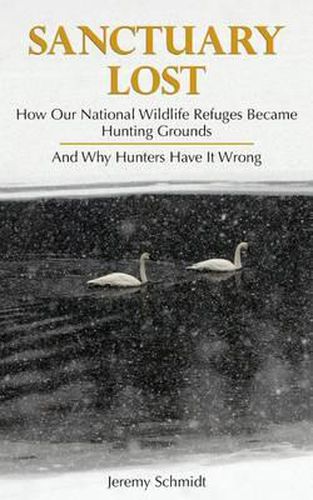Readings Newsletter
Become a Readings Member to make your shopping experience even easier.
Sign in or sign up for free!
You’re not far away from qualifying for FREE standard shipping within Australia
You’ve qualified for FREE standard shipping within Australia
The cart is loading…






How can it be that wildlife is not safe on a wildlife refuge? By statute and long-standing principle, all human activities on national wildlife refuges must take second place to the animals that live there. The U.S. Fish and Wildlife Service, which manages the system, proudly declares it thus: Wildlife comes first. Which only seems right, in places called refuges. Bird watchers, as much as they love seeing the plovers and curlews and cranes, are not allowed to disturb waterfowl on their nests. Vehicles are kept off the beach in North Carolina to avoid crushing the eggs of shore birds. In Oregon, volunteers help take down barbed wire fences to make life easier for fast-running pronghorn antelope. On refuges, you can help with bird banding, guard a sea-turtle nest, fight invasive plants, and in general do all sorts of things to learn about, appreciate, and help protect wild animals. And, you can kill them. You can shoot them. You can catch them in leg traps. You can pierce them with arrows. You can take their dead carcasses home and hang their heads on your wall. Sanctuary Lost tells the story of how wildlife refuges, once inviolate safe zones for animals, became the nation’s prime hunting grounds; and corrects the inaccurate claims of hunters that they were the first conservationists and are still the major supporters of wildlife in America. Do hunters deserve more than other citizens? Why are hunters permitted to permanently remove animals from a national wildlife refuge when non-hunters are forbidden to pick wildflowers? Is it right that hunters should have access in the fall-a splendid time to see wildlife-while others must search outside refuge boundaries for a glimpse of animals in their seasonal prime? Is it right that hunters are allowed to put wildlife to flight, scatter herds and flocks, disturb the natural soundscape, and generally alter the experience for everyone else? Should hunting on refuges be expanded while hunting becomes less popular and non-lethal users greatly outnumber hunters? Hunters say: We built the refuge system. They didn’t. We pay for them. They don’t. We’re the best conservationists. They aren’t.
$9.00 standard shipping within Australia
FREE standard shipping within Australia for orders over $100.00
Express & International shipping calculated at checkout
How can it be that wildlife is not safe on a wildlife refuge? By statute and long-standing principle, all human activities on national wildlife refuges must take second place to the animals that live there. The U.S. Fish and Wildlife Service, which manages the system, proudly declares it thus: Wildlife comes first. Which only seems right, in places called refuges. Bird watchers, as much as they love seeing the plovers and curlews and cranes, are not allowed to disturb waterfowl on their nests. Vehicles are kept off the beach in North Carolina to avoid crushing the eggs of shore birds. In Oregon, volunteers help take down barbed wire fences to make life easier for fast-running pronghorn antelope. On refuges, you can help with bird banding, guard a sea-turtle nest, fight invasive plants, and in general do all sorts of things to learn about, appreciate, and help protect wild animals. And, you can kill them. You can shoot them. You can catch them in leg traps. You can pierce them with arrows. You can take their dead carcasses home and hang their heads on your wall. Sanctuary Lost tells the story of how wildlife refuges, once inviolate safe zones for animals, became the nation’s prime hunting grounds; and corrects the inaccurate claims of hunters that they were the first conservationists and are still the major supporters of wildlife in America. Do hunters deserve more than other citizens? Why are hunters permitted to permanently remove animals from a national wildlife refuge when non-hunters are forbidden to pick wildflowers? Is it right that hunters should have access in the fall-a splendid time to see wildlife-while others must search outside refuge boundaries for a glimpse of animals in their seasonal prime? Is it right that hunters are allowed to put wildlife to flight, scatter herds and flocks, disturb the natural soundscape, and generally alter the experience for everyone else? Should hunting on refuges be expanded while hunting becomes less popular and non-lethal users greatly outnumber hunters? Hunters say: We built the refuge system. They didn’t. We pay for them. They don’t. We’re the best conservationists. They aren’t.